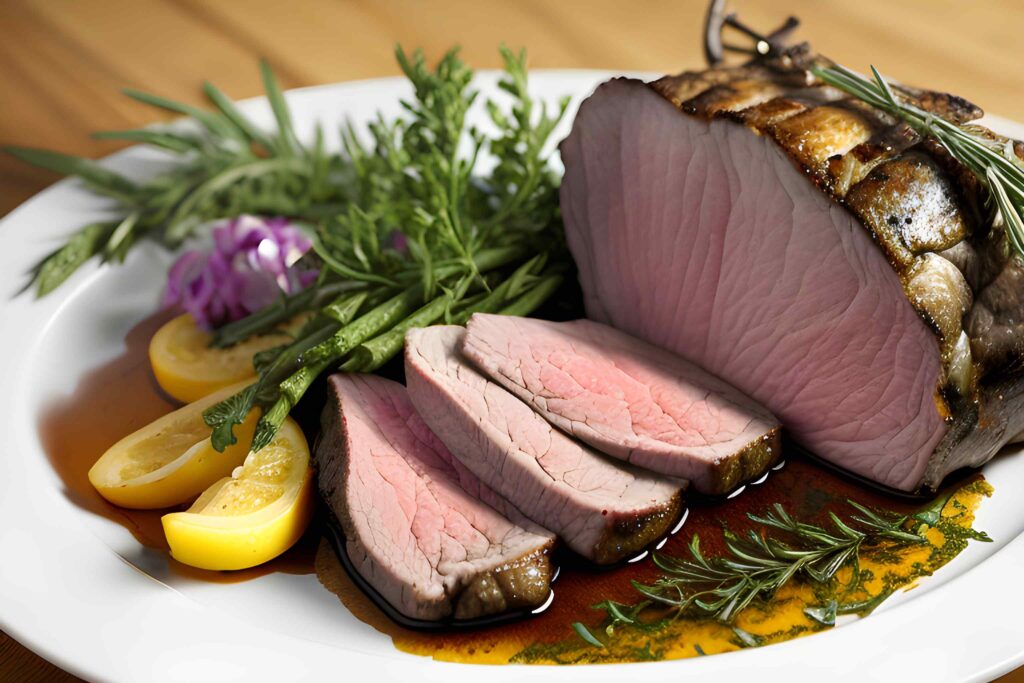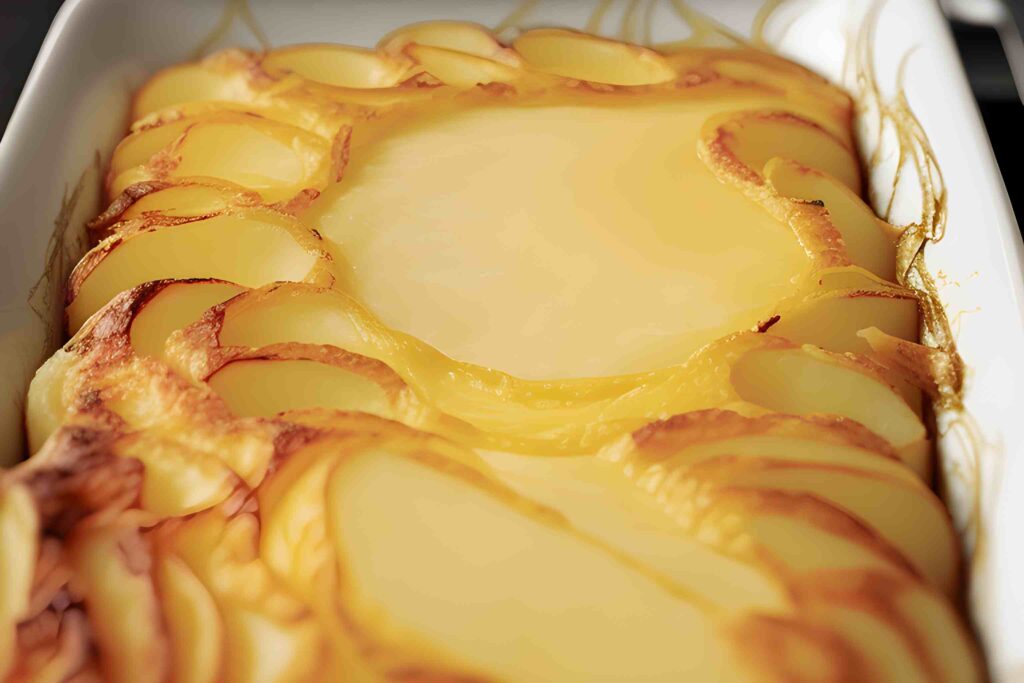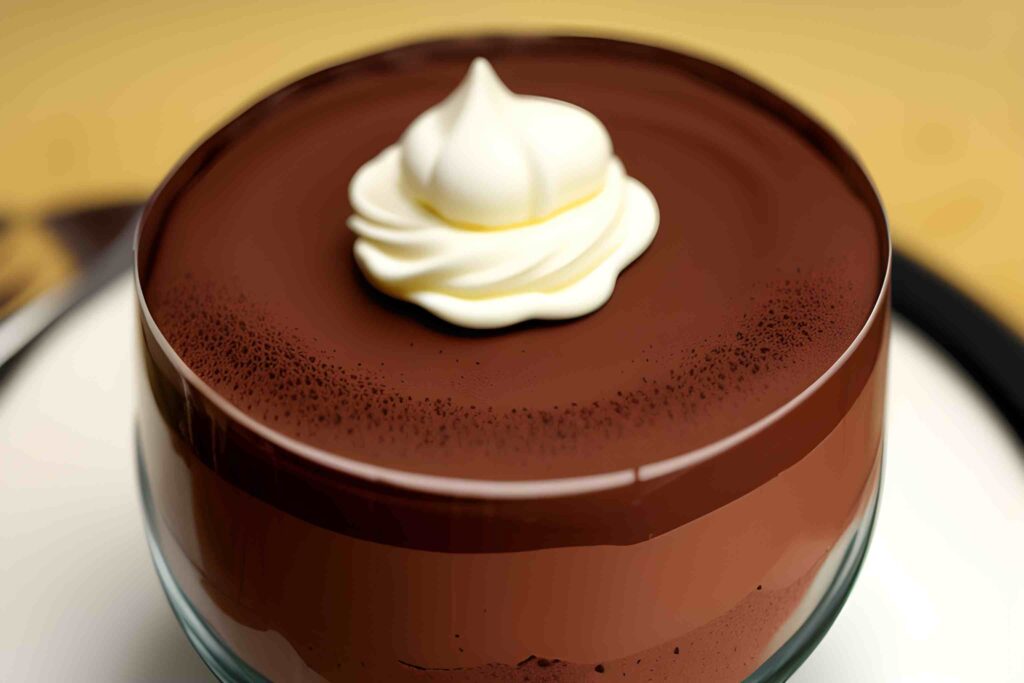This post may contain affiliate links which means I may receive a commission for purchases made through links.
Table of Contents
Introduction
The significance of Easter and the joy of intimate celebrations
Easter holds a significant place in many cultures and religions around the world. It is a time of renewal, rebirth, and the celebration of new beginnings. Beyond its religious roots, Easter has become a cherished occasion for people to come together and rejoice in the beauty of springtime, spreading joy and creating lasting memories.
While large gatherings and festive events are commonly associated with Easter, there is a unique charm in embracing the intimacy of a celebration for two. It allows for a more personal and meaningful experience, where every moment can be cherished and shared in a deeper connection. The joy of celebrating Easter in a cozy and intimate setting brings a sense of warmth, closeness, and appreciation for the simple pleasures of life.
Overview of the traditional Easter dinner for two
One of the highlights of Easter celebrations is undoubtedly the feast that takes center stage. The traditional Easter dinner holds a special place in the hearts of many, as it symbolizes abundance, togetherness, and the enjoyment of delectable flavors. While the dishes may vary across cultures and regions, the essence remains the same – a delectable and satisfying meal that brings joy and contentment.
In our traditional Easter dinner for two, we have carefully curated a menu that encompasses the timeless classics of this festive occasion. Each dish has been thoughtfully selected to showcase the richness of flavors, the indulgence of seasonal ingredients, and the culinary traditions that make Easter so special. From succulent herb-roasted lamb to creamy potato gratin, vibrant spring vegetables, and a decadent chocolate mousse, this menu captures the essence of traditional Easter fare while catering to the intimate setting.
Setting the stage for a memorable culinary experience
Preparing a special Easter dinner for two offers an opportunity to create a truly memorable culinary experience. The ambiance, the attention to detail, and the artful combination of flavors all contribute to the magic of the occasion. From setting a beautifully adorned table with fresh flowers and elegant dinnerware to creating a playlist that sets the mood, every aspect can contribute to a memorable and enchanting atmosphere.
As you embark on this culinary journey, take the time to savor each step of the preparation process. Engage your senses as you choose the ingredients, infuse your dishes with love and care, and revel in the anticipation of the delightful flavors that will soon grace your palate. Allow yourself to be fully present in the moment, appreciating the art of culinary creation and the joy of sharing a remarkable meal with your loved one.
Get ready to immerse yourself in the magic of a traditional Easter dinner for two. In the following sections, we will delve into each dish, exploring their significance, providing detailed recipes(click the highlighted titles and it will take you to the recipe page), and offering tips and suggestions to make this culinary experience truly exceptional. So, let’s prepare to indulge in the enchantment of Easter and create cherished memories that will last a lifetime.
Classic Herb-Roasted Lamb: A centerpiece of elegance and tradition

Exploring the symbolism of lamb in Easter celebrations
Lamb holds great symbolic significance in Easter traditions, representing purity, sacrifice, and new beginnings. Throughout history, it has been an integral part of Easter feasts, reflecting its importance in cultural and religious customs.
Overview of the Classic Herb-Roasted Lamb
The Classic Herb-Roasted Lamb serves as a magnificent centerpiece for your Easter dinner for two. This dish combines tender and succulent meat with aromatic herbs, creating a harmonious blend of flavors that embodies both elegance and tradition.
Tips for a memorable experience
To ensure an unforgettable dining experience with your Classic Herb-Roasted Lamb, consider the following tips:
Choose quality ingredients: Opt for a bone-in leg of lamb weighing around 1-2 pounds. This will ensure tenderness and flavor in your final dish.
Season generously: Prepare a fragrant herb paste using fresh herbs such as rosemary, thyme, and parsley, along with minced garlic, salt, and pepper. Rub this mixture all over the lamb, ensuring it seeps into the small incisions you made earlier. This will infuse the lamb with incredible flavor.
Cooking temperature and time: Preheat your oven to 350°F (175°C). Place the herb-coated lamb in a roasting pan, preferably on a rack to promote even cooking and airflow. Roast the lamb for approximately 20 minutes per pound, or until it reaches your desired level of doneness. For a succulent medium-rare lamb, aim for an internal temperature of 145°F (63°C) when measured with a meat thermometer. Avoid touching the bone when checking the temperature.
Resting is key: Once the lamb has reached the desired temperature, remove it from the oven and let it rest for about 15-20 minutes before carving. This crucial step allows the juices to redistribute within the meat, resulting in a moist and tender roast.
By following these tips, you’ll create a memorable centerpiece for your Easter dinner. The Classic Herb-Roasted Lamb will be flavorful, tender, and sure to impress your dining companion. Enjoy the process and savor the delicious results!
Serving suggestions and accompaniments
To complement the Classic Herb-Roasted Lamb, consider these serving suggestions:
Carving the lamb: After allowing the lamb to rest, it’s time to carve it. Use a sharp carving knife to slice the lamb into thin, tender pieces. This will showcase the succulence and make it easier to enjoy.
Sauces to enhance the flavor: Elevate the taste of your lamb by serving it with a delicious sauce. Consider a savory pan sauce made from the drippings, or a refreshing minty herb sauce. These sauces will complement the richness of the lamb and add an extra layer of flavor.
Side dishes to complete the meal: A traditional Easter dinner is made complete with complementary side dishes. Serve the lamb alongside Creamy Potato Gratin, a comforting and indulgent dish. Additionally, prepare a vibrant Spring Vegetable Medley to add freshness and balance to the meal. These sides will provide a well-rounded dining experience.
Wine pairing: To enhance the flavors of the lamb, pair it with a bold red wine. Cabernet Sauvignon or Merlot are excellent choices that will complement the richness and intensity of the meat. The wine’s robust flavors will enhance the overall enjoyment of your Easter dinner.
The Classic Herb-Roasted Lamb encapsulates the essence of Easter traditions, providing a sophisticated and timeless centerpiece for your intimate celebration. Its symbolic significance and the harmony of flavors are sure to create a memorable culinary experience.
Creamy Potato Gratin: Indulgence and comfort in a side dish

Highlighting the role of comforting side dishes in Easter meals
No Easter dinner is complete without a comforting and indulgent side dish. Alongside the Classic Herb-Roasted Lamb, the Creamy Potato Gratin adds a touch of luxury and warmth to your intimate celebration. These side dishes not only complement the main course but also create a balanced and satisfying dining experience.
Ingredients and layering techniques for the Creamy Potato Gratin
The Creamy Potato Gratin is a delightful combination of thinly sliced potatoes, rich cream, and layers of melted cheese. To create this luscious side dish, you will need high-quality potatoes, such as Yukon Gold or Russet, along with cream, butter, garlic, and your choice of cheese, such as Gruyère or Parmesan.
The layering technique involves arranging the thinly sliced potatoes in a baking dish, seasoning them with salt, pepper, and minced garlic, and then repeating the layers until the dish is filled. The cream is then poured over the potatoes, allowing it to seep into the layers, infusing them with velvety goodness.
Achieving the perfect balance of creaminess and texture
To achieve the perfect balance of creaminess and texture in your Creamy Potato Gratin, consider the following tips:
Potato selection: Choose potatoes that have a good balance of starch and moisture, such as Yukon Gold or Russet potatoes. These varieties will contribute to the gratin’s desired creaminess.
Slicing the potatoes: Use a mandoline slicer or a sharp knife to slice the potatoes into thin, uniform slices. This ensures even cooking and a consistent texture in the gratin.
Cheese selection: Experiment with different types of cheese to enhance the flavor of your gratin. Gruyère, Parmesan, or a combination of cheeses work beautifully. Grate or thinly slice the cheese for easy melting and distribution.
Baking time and temperature: Preheat your oven to 375°F (190°C). Place the gratin dish in the oven and bake for about 45-55 minutes, or until the top is golden brown and the potatoes are tender when pierced with a fork. Adjust the baking time as needed based on your oven’s performance.
Resting period: Once the Potato Gratin is baked to perfection, remove it from the oven and allow it to rest for a few minutes. This resting period allows the flavors to meld together and the dish to set, making it easier to serve.
Pairing options to enhance the flavors
The Creamy Potato Gratin pairs exceptionally well with a variety of dishes, including the Classic Herb-Roasted Lamb. Here are a few options to enhance the flavors and create a delightful culinary experience:
Spring Vegetable Medley: Serve the gratin alongside a medley of fresh and vibrant spring vegetables, such as asparagus, peas, and baby carrots. This combination adds a burst of color and freshness to your plate.
Green Salad: A simple green salad with a tangy vinaigrette provides a refreshing contrast to the richness of the gratin, creating a well-rounded meal.
Crusty Bread: Serve warm, crusty bread on the side to sop up any extra creaminess and to add a delightful textural element to your meal.
Spring Vegetable Medley: Celebrating the freshness of the season
Exploring the significance of incorporating seasonal vegetables
In the spirit of Easter and the renewal that comes with the arrival of spring, incorporating seasonal vegetables into your meal, not only adds vibrant colors to your plate but also celebrates the freshness and abundance of the season. The Spring Vegetable Medley is a delightful addition to your traditional Easter dinner for two, allowing you to savor the flavors and textures of the season’s finest produce.
Showcasing the selection and preparation of spring vegetables
When creating a Spring Vegetable Medley, it is important to choose a variety of vegetables that are in season during springtime. Some popular choices include asparagus, peas, baby carrots, radishes, and artichokes. These vegetables are known for their tender textures, delicate flavors, and vibrant colors.
To prepare the vegetables, ensure they are properly cleaned and trimmed. Depending on the specific vegetable, you may need to blanch, steam, or sauté them briefly to achieve the desired level of doneness while preserving their natural crunch and color.
Techniques for sautéing and preserving vibrant colors and crunch
Sautéing is a popular cooking technique that works well with spring vegetables. To sauté the vegetables, heat a small amount of oil or butter in a skillet over medium heat. Add the vegetables, starting with the ones that take longer to cook, such as carrots or artichokes, and gradually add the more delicate vegetables like peas or asparagus. Sauté them until they are crisp-tender, ensuring they retain their vibrant colors and crunch.
To preserve the vibrant colors of the vegetables during cooking, you can blanch them briefly in boiling water before sautéing. This helps to lock in their colors and maintain their visual appeal on the plate.
Flavor enhancements and presentation ideas
To enhance the flavors of the Spring Vegetable Medley, consider incorporating additional elements such as:
Vegetable selection: Choose a variety of fresh, seasonal vegetables such as asparagus, peas, carrots, radishes, and baby potatoes. Wash and trim the vegetables as needed, removing any tough or woody parts.
Sautéing the vegetables: Heat a large skillet or sauté pan over medium heat and add a drizzle of olive oil or a knob of butter. Add the vegetables to the pan and sauté them until they are tender-crisp, about 5-7 minutes. Be careful not to overcook them, as you want to retain their vibrant colors and textures.
Seasoning: Season the vegetables with salt, pepper, and any additional spices or herbs of your choice. This could include garlic powder, thyme, or a squeeze of lemon juice for added freshness.
Optional flavor enhancements: Consider incorporating additional elements to elevate the flavors of your Spring Vegetable Medley. Fresh herbs like mint, parsley, or chives can be finely chopped and sprinkled over the vegetables. Citrus zest, grated from a lemon or orange, can add a tangy and fragrant twist. Toasted nuts, such as almonds, pine nuts, or walnuts, can provide a delightful crunch and nutty flavor.
Presentation: For an elegant presentation, transfer the sautéed spring vegetables to a platter, arranging them in a visually appealing manner. Allow the vibrant colors of the vegetables to shine through. Garnish with a sprig of fresh herbs or a sprinkle of citrus zest for an extra touch of elegance.
The Spring Vegetable Medley celebrates the freshness and flavors of the season, adding a burst of color and taste to your Easter dinner for two. By incorporating these tips and showcasing the vibrant tastes and textures of seasonal vegetables, you’ll create a delightful and memorable dish.
Decadent Chocolate Mousse: A sweet and indulgent finale

Significance of ending the meal with a delectable dessert
No Easter dinner is complete without a delightful dessert to satisfy your sweet tooth and provide a satisfying end to the meal. The Decadent Chocolate Mousse is the perfect choice to bring a touch of elegance and indulgence to your traditional Easter dinner for two. This rich and velvety dessert is sure to leave a lasting impression and create a memorable dining experience.
Ingredients and steps to create the Decadent Chocolate Mousse
Creating the Decadent Chocolate Mousse requires a few key ingredients, including high-quality dark chocolate, eggs, sugar, and heavy cream. The chocolate is melted and combined with the egg yolks and sugar, creating a smooth and luscious base. The egg whites are then whipped to stiff peaks, adding airiness and a delicate texture to the mousse. Finally, the whipped cream is gently folded into the chocolate mixture, resulting in a creamy and heavenly dessert.
Tips for achieving a velvety and luscious texture
To achieve a velvety and luscious texture in your Decadent Chocolate Mousse, it is important to handle the ingredients with care. When melting the chocolate, use a gentle heat and stir constantly to ensure it melts smoothly without any lumps. When folding the whipped cream into the chocolate mixture, do so gently and in a slow, deliberate motion to maintain the mousse’s airy consistency. Be sure to refrigerate the mousse for a few hours before serving to allow it to set and develop its desired texture.
Creative garnish options and serving suggestions
To elevate the presentation of your Decadent Chocolate Mousse, consider incorporating creative garnish options such as:
Shaved chocolate curls: Use a vegetable peeler to create delicate curls from a block of chocolate and sprinkle them over the mousse for an elegant touch.
Fresh berries: Top each serving of mousse with a few fresh berries such as raspberries or strawberries to add a burst of freshness and a vibrant pop of color.
Whipped cream: Dollop a small amount of freshly whipped cream on top of the mousse for added decadence and a creamy contrast.
When it comes to serving, consider using individual dessert glasses or small ramekins to create an elegant and personalized presentation. Allow the mousse to chill in the refrigerator until it reaches the desired consistency, then garnish each serving with your chosen toppings just before serving. This dessert is best enjoyed chilled and can be served with a cup of hot coffee or a glass of dessert wine for a truly indulgent experience. The Decadent Chocolate Mousse is a sublime and irresistible way to conclude your traditional Easter dinner for two. Its rich and velvety texture, combined with the deep flavors of dark chocolate, will leave you and your dining partner feeling satisfied and content. Prepare to indulge in this sweet finale that will surely make your Easter celebration extra special.
Happy Easter!
Encouragement to embrace the joy of a special Easter celebration for two
As we conclude this journey through a traditional Easter dinner for two, we encourage you to fully embrace the joy and significance of this special celebration. While larger gatherings may not always be possible, there is beauty in creating intimate moments and memories with your loved one. By putting in the effort to prepare a delicious meal and setting the stage for a memorable culinary experience, you can infuse your Easter celebration with warmth, love, and togetherness.
Recap of the traditional Easter dinner menu
Throughout this blog post, we explored the elements of a traditional Easter dinner for two, carefully curated to enhance the flavors and spirit of the occasion. We started with the Classic Herb-Roasted Lamb, a centerpiece of elegance and tradition, symbolizing renewal and sacrifice. Accompanying the lamb, we delved into the Creamy Potato Gratin, a side dish that offers indulgence and comfort with its velvety layers of creamy potatoes. The Spring Vegetable Medley showcased the freshness of the season, bringing vibrant colors and flavors to the table. Lastly, we discovered the Decadent Chocolate Mousse, a sweet and indulgent finale that adds a touch of decadence to the meal.
Wishing readers a happy and delicious Easter celebration
As you embark on your Easter celebration for two, we extend our warmest wishes for a happy and delicious experience. May the aroma of the herb-roasted lamb fill your home with anticipation, and may the creamy potato gratin and spring vegetable medley bring comfort and freshness to your palate. Finally, may the decadent chocolate mousse leave you with a sweet and memorable ending to your meal.
Remember, it’s not the size of the gathering that matters most, but the love and care you put into creating a special and intimate celebration. Cherish this time together, savor every bite, and create beautiful memories that will last a lifetime. From our kitchen to yours, we wish you a blessed and joy-filled Easter.
Ingredients after serving size adjusted for two:
Classic Herb-Roasted Lamb:
– 1 small bone-in lamb rack (about 1 pound)
– 2 tablespoons olive oil
– 2 cloves garlic, minced
– 1 tablespoon fresh rosemary, finely chopped
– 1 tablespoon fresh thyme leaves
– Salt and pepper to taste
Creamy Potato Gratin:
– 2 large potatoes, thinly sliced
– 1 cup heavy cream
– 1 clove garlic, minced
– 1/2 cup grated Gruyere cheese
– Salt and pepper to taste
– Fresh parsley for garnish
Spring Vegetable Medley:
– 1 cup asparagus spears, trimmed and cut into 2-inch pieces
– 1 cup sugar snap peas, trimmed
– 1 cup baby carrots, peeled and halved lengthwise
– 1 tablespoon olive oil
– 1 clove garlic, minced
– 1 tablespoon lemon juice
– Salt and pepper to taste
– Fresh dill for garnish
Decadent Chocolate Mousse:
– 3 ounces semi-sweet chocolate, chopped
– 1 tablespoon unsalted butter
– 1 large egg, separated
– 1 tablespoon granulated sugar
– 1/2 teaspoon vanilla extract
– 1/2 cup heavy cream
– Optional: whipped cream and chocolate shavings for garnish
